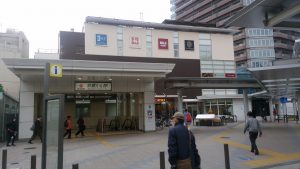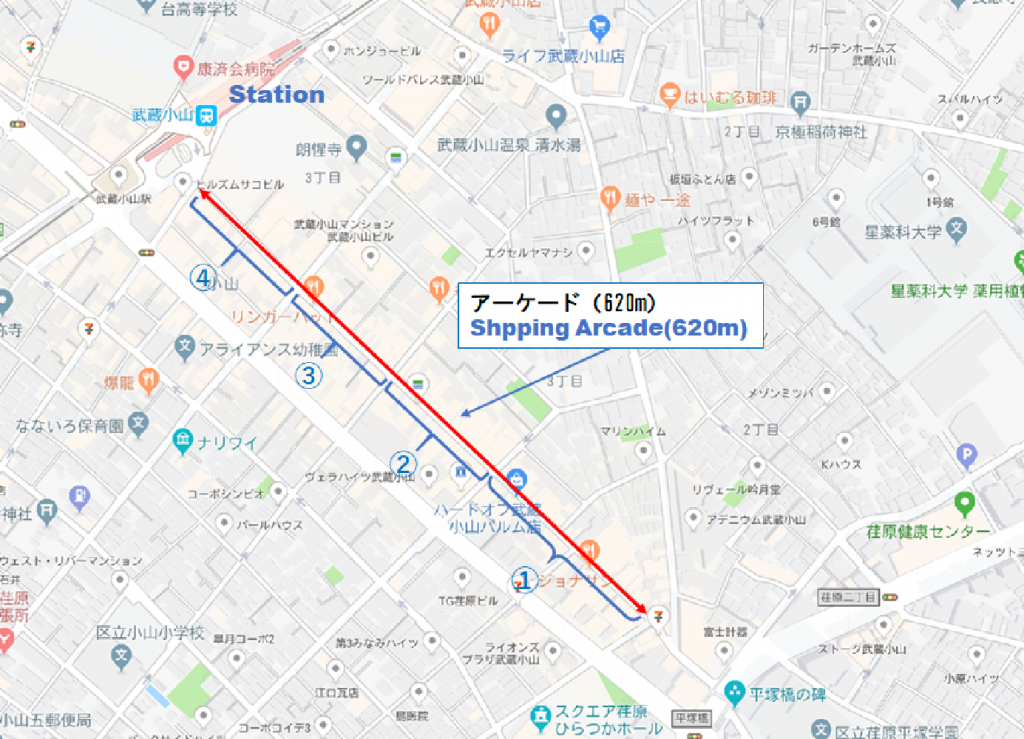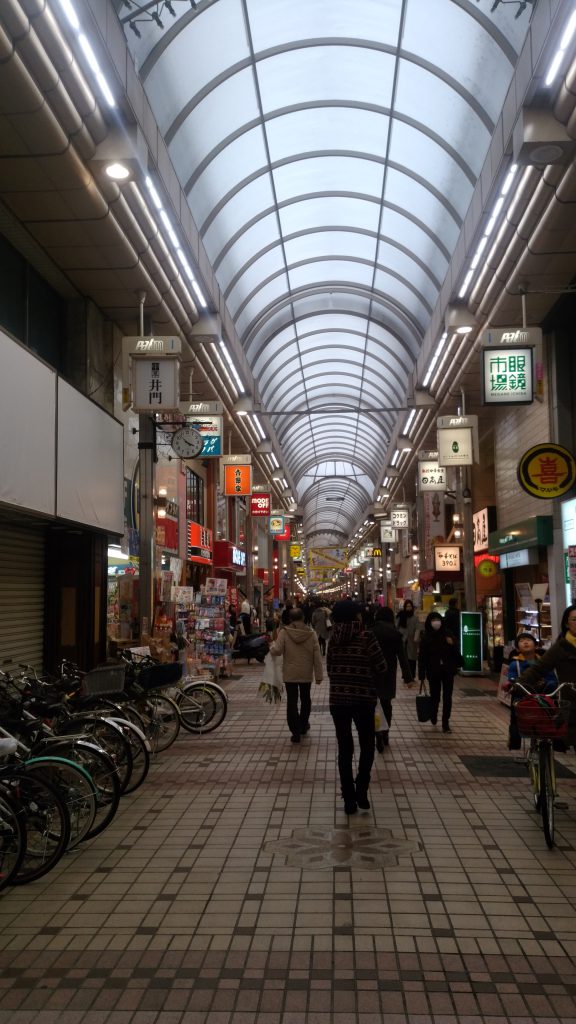再開発が行き着く先<我ら東京都民の暮らしは・・・>/Where will Urban redevelopment lead us to?
東京は『再開発』だらけ
大学を出て金融業界で働き始めて、最初のうちは日本と海外を出たり入ったりしていたものの、日本で一番長く働いたエリアは日本橋兜町(東京都中央区)だ。東京証券取引所のすぐ隣に位置するビル(今では金融とは無関係の家主に変わっているが)をベースにして働いていた時期は今でも一抹の苦さを含んだ懐かしい想い出だ。兜町(当時)の面白いところはウォール街(米ニューヨーク)に匹敵する金融の中心地でありながら、開発が進んでおらずビルの谷間に多くの木造家屋がひしめき合い、そこに昔ながらの老舗飲食店が立ち並んでいたことだった。なかでも終戦直後に創業した「松よし」という鰻(うなぎ)屋は“株屋”には知られた名店で、この店の混み具合が株式相場の腰の強さを示す「松よしインデックス」なる言葉も生まれた。ただこの店は2018年末に惜しまれつつ70年の歴史に幕を下ろしている。これ以外でも非常に多くの馴染み深い店が店主の高齢化などを背景として閉店している。
“Urban Redevelopment” Everywhere in Tokyo
After the college I started working in financial sector. Although I went in and out from Japan quite often in the beginning, I spent most of the time in Nihonbashi Kabutocho (Chuo Ward of Tokyo) when I stayed in Japan. I still miss working life in Kabutocho with a bit of bitter memories. Quite characteristics it seemed, Kabutocho was full of old wood-built houses in valleys of tall buildings and there were many small tasty traditional restaurants, in spite of Japanese Wall Street position. Especially “Matsuyoshi”, known as eel specialities, was quite familiar with stock brokers. They often talked about “Matsuyoshi Index” which showed strong nerve of market trend, as eel dishes were expensive and they enjoy it only when they are rich. However this restaurant was closed at the end of 2018 and finished 70 years history. Except this, many traditional cool restaurants are getting closed due to aging of operators in this area.
(English text continues to the latter half of the page)
別にこうした動きに合わせたわけではないだろうが、実は兜町から日本橋に至る大きなエリアで大規模な再開発が進んでいる。かつての老朽ビルや家屋は軒並み解体されて巨大な高層ビルがそこら中で建設が進んでいる。かつて馴れ親しんだ兜町(シマ)の街並みはすっかり変わってしまいそうだ。
しかしこれは兜町に限った話ではない。実は2020年に向けた東京は『再開発』のオンパレードだ。23区内だけでWikipediaが列挙する再開発計画は266件、最も多いのが大手町を有する千代田区の35件、その次が兜町のある中央区の28件だ。これは大型ビルの件数を数えたものなので、エリアごとの再開発件数ということだと1/4か1/5くらいの水準になるだろうが、東京の主要道路を走っているとそこら中で大規模再開発が進んでいることは間違いない。
常盤橋(東京駅付近)の再開発イメージ(三菱地所HPより)
https://youtu.be/OydNzuDjmOE
官主導で進むこうした東京全体の再開発は10年後の東京の景色をすっかり変えてしまうかもしれない。ただそこに住む住民にとっての暮らしはどう変わるのだろうか。そうしたことを思い起こさせてくれる前例を品川区のある地域に見てみよう。
『再開発』がもたらす変化とは:武蔵小山の例
品川区の武蔵小山は自宅から徒歩で10分程度。ここは日本一長いショッピングアーケードで知られている(中原街道を挟んで続く戸越銀座商店街を含む)。メディアの間でこのショッピングアーケードは『生活者の街』というアイコンで認識されており、ニュース番組でサラリーマンからコメントを取りたいときには新橋駅前のSL広場、家庭の主婦のコメントが取りたい場合には武蔵小山の商店街というのが定番だ。こうした“生活者にとってのブランド価値”のおかげで周辺の不動産物件は高水準を保ち、頻繁にTV番組に取り上げられるために週末の買い物客も引きも切らない状態だ。

東急目黒線武蔵小山駅

駅前のショッピングアーケード入り口。
自分が長い間、地元の“生活者”としてこの武蔵小山と接してきて感じるのは、商店街の中に大手資本系のチェーン店舗が明らかに増えてきていることだ。実際に商店街を歩いて検証してみた。

今回の検証では武蔵小山駅からアーケードが続く約620mを駅から遠い順に4つのエリアに分けて、アーケードに面した1階と2階の店舗を対象にして、全店舗数の中で大型資本系チェーン店舗の割合を調べた。


左が駅前の商店街入り口、右が商店街の終点。調査はこの間のアーケードで行った。
調査の結果は以下の通り。あくまで“目測”なので細かい数え間違いもあるかもしれないが、傾向はほぼ明白だ。商店街店舗の半数以上はすでに大型資本のチェーン店に切り替わっており、特に駅に近いほどその傾向が強い。

“店主”から“家主”への転換⇒リスクの軽減に
武蔵小山の商店街の魅力はもともと地元に根付いた個人経営のユニークな商店が軒を連ねているところだった。

武蔵小山の名物店のひとつ「鳥勇」。持ち帰り焼き鳥の専門店で夕方には行列も。

こちらも巨大パフェが名物の喫茶店。TVで武蔵小山特集が組まれる時にはだいたい出てくる。
ところが自分が近所に住むようになってからだけでも、次々とそうした小規模の個人店舗が大手資本系のチェーン店に切り替わっていった。

駅に近い場所(エリア④)からの1枚。日本人にはお馴染みのチェーン店がずらりと並んでいる。
ただし状況を考えればこれは当然の流れとも言える。飲食にしても小売りにしても店舗の経営はリスクが高いもの。それは商店街ブランドによって大勢のお客が押し寄せるようになった武蔵小山でも同じことだろう。それならばむしろ集客力を見越して集まってくるチェーン店業者に物件を貸す方がはるかにリスクが少ない。“店主”から“家主”になることで、事業を『ハイリスク・ミディアムリターン』から『ローリスク・ミディアムリターン』に転換することが可能になる。
『再開発』と店舗の“資本化”が住人にもたらすもの
ただ住人にとってみれば、特に周囲の飲食店が軒並みチェーン店ばかりになってしまうことは歓迎できない。飲食のチェーン店の特徴は押しなべて“クオリティに決定的な問題はなく、価格も安いが、特徴はない”というものばかり。やはり飲食店に関しては“丼勘定の美学”、すなわち“収支の科学”ではなく、美味しいものを追求して常連客に提供したいという個人経営の店を開拓したい。しかしそうした個人経営の店は再開発された大型ビルにはまず入れない。こうした大型ビルでは高額の保証金が必要になるし、テナントを選ぶビル側も万が一のリスクを考えると過去の実績がありコンペでしっかりした説明力スキルを持った会社を選ぶだろう。武蔵小山の場合は再開発よりも前に、その商店街としてのブランド力に惹かれて大手資本のチェーン店が乱立した。しかし、先に見た兜町や東京の中心部では「都市再開発」による低層不動産の地上げと大型ビル化によって同じ現象が起きていくだろう。東京中で進行する『都市再開発』、10年後には東京の街並みもがらりと変わっているかもしれないが、そこに効率性だけを追求したチェーン店舗しか残っていないとしたら、東京の住民としてはきわめて味気ない暮らしにならないことを願うのみだ。
“Urban Redevelopment” Everywhere in Tokyo
After the college I started working in financial sector. Although I went in and out from Japan quite often in the beginning, I spent most of the time in Nihonbashi Kabutocho (Chuo Ward of Tokyo) when I stayed in Japan. I still miss working life in Kabutocho with a bit of bitter memories. Quite characteristics it seemed, Kabutocho was full of old wood-built houses in valleys of tall buildings and there were many small tasty traditional restaurants, in spite of Japanese Wall Street position. Especially “Matsuyoshi”, known as eel specialities, was quite familiar with stock brokers. They often talked about “Matsuyoshi Index” which showed strong nerve of market trend, as eel dishes were expensive and they enjoy it only when they are rich. However this restaurant was closed at the end of 2018 and finished 70 years history. Except this, many traditional cool restaurants are getting closed due to aging of operators in this area.
It might be just a coincidence that very large area from Kabutocho to Nihonbashi is being redeveloped. Old and tiny buildings here and there are being scrapped down to build new modern skyscrapers. My familiar Kabutocho scene will be very different in near future.
This is not the issue only for Kabutocho. Tokyo ahead of 2020 is on parade of “Urban Redevelopment. Japanese Wikipedia lists 266 redevelopment projects only in 23 wards in Tokyo. The largest number is Chiyoda ward, including Otemachi, next one is Chuo ward where Kabutocho is there. This counts numbers of all big buildings so the number of “area development” would be 1/5 to1/4 of total numbers. Anyway you would find everywhere in Tokyo are redeveloped when you drive along major streets.
Redevelopment scene of Tokiwa-bashi (Tokyo station area, Mitsubishi Estate Company web site)
https://youtu.be/OydNzuDjmOE
Urban Redevelopment driven by the Government will change whole scenery of Tokyo in 10 years. Then what would happen with daily lives of Tokyo residents like us? There is a place which might give a clue to its answer.
How “Redevelopment” changes residents’ lives: Practice from MusashiKoyama
It is around 10 minute walk from my house to Musashi Koyama, Shinagawa ward. This town is known as “the longest shopping arcade” in Japan (including Togoshi Ginza across the street). Among Japanese Mass Media, this town is taken as an icon of “Consumers’ town”. When a news show tries to take comments from office workers, they would go to Shimbashi station (the terminal station which is famous for cheap Japanese bars), and for comments from house wives, they would surely go to Musashi Koyama. Thanks to this Brand value as “consumers’ town”, estate prices in the area are stabilized and many TV show take this town as hot topics. In every weekend this shopping arcade is congested with people including day trippers.

Musashi Koyama station, Tokyu Meguro line.

The entrance of Shopping arcade.
I have watched Musashi Koyama for long time as a consumer. But I can’t help feeling Chain stores of major capitals are constantly increasing their presences in the town. I verified this tendency by walking along the arcade.

In this verification, I walked along the arcade for 620m, and I distributed 4 areas like the map above. I counted numbers of shops only 1 and second floors facing the arcade.


The left is the entrance of the arcade and the right is its exit. The research was done between these.
Verification result is as followings, It is just measure with my eye, so it might include some miss counts. But the tendency is quite clear. More than half of total shops have been replaced by major capital’s chain stores, and the tendency is obvious as it becomes close to the station.
-1024x353.png)
Conversion from “Shop master” to “Land master”⇒diminishing risks
The Musashi Koyama shopping arcade used to be so attractive because many unique shops operated by individuals are standing in a row along the arcade.

This is “Tori yu”, very popular Yakitori place in the arcade which shows long que in weekend.

This is famous coffee shop which is known for “Giant fruit parfait”. This shop has appeared in TV program quite often.
However many of those small sized private operated shops have been replaced by chain stores after I started living in this area.

This is arcade scene of area ④. Many major chain stores which are quite familiar with Japanese people are standing in a row.
But this tendency could be very natural outcome. Even in such a popular area, shop operations include not-small risk. Then land owners in the area would like to rent their estates to major capitals’ stores rather than operate shops on their own. This is much lower risk. They can convert their business from “High risk, medium return” to “Low risk, medium return”.
What do “Redevelopment” and “Store capitalization” bring to residents’ lives?
For residents in the area, it is not something welcome to see whole restaurants in the arcade replaced by national famous chain stores. The characteristics of chain store restaurants is more or less “Upper medium quality at reasonable prices”. Off course they have built up prototypes of profitable stores under sophisticated calculation. But I prefer “Aesthetics of rough estimates by chef” who is willing to offer his best quality rather than “Science of profit”.
However such shop masters cannot have spaces in new developed buildings. High level of guarantee is needed to be tenants of new developed buildings and building management side would prefer major capital chain stores which have proven track records and skills of presentation. In the case of Musashi Koyama, many chain stores have rushed into the arcade due to its brand value to attract customers. And in areas like Otemachi or Kabutocho where redevelopments are going on, same phenomenon is very likely through buying up of low story estates and consolidations into new modern skyscrapers. “Urban Redevelopment” will change Tokyo scenery in next 10 years. But if only profit effective chain stores are there, I truly wish our lives will not be any more dreary.

Woah! I’m really digging the template/theme of this site.
It’s simple, yet effective. A lot of times it’s very hard to get that
“perfect balance” between superb usability and appearance.
I must say you have done a amazing job with this. Also, the blog loads extremely fast for me on Chrome.
Excellent Blog! http://Www.Se7Enbites.com/
Hi, I really appreciate your feed back! I’m quite surprised to know this Blog reached nice looking Cafe in Orland. I looked your web site as well. Chocolate corted biscuits looks quite yummy! Please keep in touch with my blog into the future!
Ieda Mann